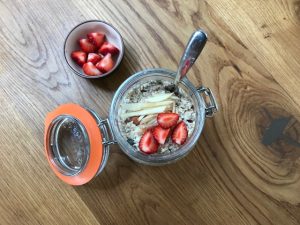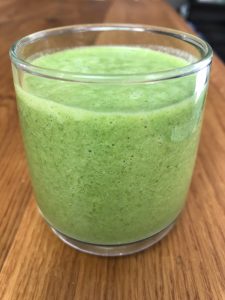
Are you confused by all the contradictory dietary advice out there?
Should you go low fat or low carb? Vegan or paleo? Ketogenic? Mediterranean? Pescatarian?
The truth is, it’s extremely difficult to prove that there’s one universal diet that’s superior to all others, certainly in terms of its effects on health and peak performance.
One thing is clear, we shouldn’t be eating the prevailing low quality Western diet, which is high in refined sugar, processed and red meat and saturated fat. This pattern of eating has resulted in 2 billion people being overweight or obese, and has fuelled the increasing prevalence of non-communicable diseases such as type 2 diabetes, cardiovascular disease and cancer (1,2).
In reality, many people will derive significant health benefits if they stick to a few simple, evidence based food principles.
However, if we really want to answer the question of “what should we eat?” then we must also consider planetary health, as this is inextricably linked to our own health and survival.
And when we take the planet into consideration, the answer is very clear: we should eat a plant-based diet.
This is the conclusion of a number large-scale, mainstream scientific studies (3,4,5), including the recently published literature review by the EAT-Lancet Commission (1).
So why is a plant-based diet best for the planet?
To answer this we need to look at our current system of food production, which we now understand to be the single largest contributor to environmental degradation.
Food systems account for up to 30% of global greenhouse gas emissions(1,3,5). However, climate change is only part of the story. Food systems drive a range of serious environmental issues that now threaten human health and survival, including biodiversity loss, eutrophication and depletion of fresh water supplies.
Food production is the largest cause of global land-use change, with 40% of terrestrial land used for crops and grazing. This has resulted in massive biodiversity loss, to the extent that we are witnessing the Earth’s 6th Mass Extinction Event. Species are being lost 100-1000 times faster than the natural background rate. 80% of extinction threats to birds and mammals are due to agriculture (1).
The impact of humans and our agriculture is now so great that it has drastically altered the make-up of global biomass (the total weight of living matter in a given area).
Humans comprise just 0.01% of Earth’s total biomass, but our impact is disproportionately large; 96% of all mammals are either humans (36%) or our livestock (60%) – mainly cattle and pigs. Only 4% of mammals are wild. 70% of all birds on the planet are farmed poultry. Only 30% are wild (6).
Food production is responsible for 78% of eutrophication (1,5). This refers to the excessive application of nitrogen and phosphorus fertilisers, which are washed off into streams and rivers, causing algal blooms and hypoxic conditions in freshwater and marine ecosystems, which results in widespread coastal “dead zones,” devoid of aquatic life.
In areas where fish still exist, 60% of the world’s fish stocks are now fully fished, and 30% are overfished. Catches by global marine fisheries have been declining since 1996 (1).
The overall negative impacts of our food systems are very clear, but we still need to eat. So what we really want to know is: which food products are ecologically sustainable, and which are harmful.
To answer this, Joseph Poore and Thomas Nemecek performed the largest study to date of the impacts of agriculture on the environment, and their results were published in Science in 2018 (5).
They undertook a global analysis of data from 38,700 farms in 119 countries, looking at 40 food products, in terms of their effects on five key environmental indicators: greenhouse gas emissions, land use, acidification, eutrophication and freshwater withdrawals.
They found that even the most sustainable animal products exceed the average impacts of plant protein. As a result, if we were to switch to a plant based diet, it would reduce land use by 76%, greenhouse gas emissions by 49%, acidification by 50%, eutrophication by 49% and freshwater use by 19%.
In countries such as the UK, Australia and the USA, where meat consumption is 3 times the global average, the effects would be even greater.
The authors concluded that moving from a meat-based to plant-based diet has “transformative potential” and that avoiding meat and dairy is the single biggest way we can reduce our ecological impact.
But what exactly should we eat? What does a diet that is both healthy and ecologically sustainable look like?
This key question was finally addressed by EAT-Lancet Commission (a joint project by the Norway based NGO EAT and the Lancet Medical Journal), which undertook an extensive literature review and published its results earlier this year (1).
They came up with a universal healthy reference diet, or Planetary Diet, which is predominantly plant-based, provides 2500 kcal per day, and consists largely of vegetables, fruits, whole grains, legumes, nuts and unsaturated oils. It specifies a low to moderate amount of seafood and poultry, and no or low amounts of red meat, processed meat, added sugar, refined grains and starchy vegetables.
In practice, the Planetary Diet is similar to a Mediterranean or Okinawan Diet, which for many Europeans represents quite a shift in the way they eat. It would involve a 77% reduction in red meat consumption (by allowing only 1 beef burger per week), 15 times more intake of nuts and seeds, 2 servings of fish per week, 1-2 eggs per week, and 1 glass of milk per day (or 250g of full fat milk products).
So, having read this, are you now going to adopt the Planetary Diet, or perhaps go completely vegan? Maybe not…
Behavioural change is notoriously difficult. Even if there was widespread acceptance of the problems associated with our current level of consumption of animal products, awareness of an issue is no guarantee that people will adopt a more sensible path, as most health practitioners will attest.
This is certainly true for plant-based dietary change, probably because for many societies, eating animal products is the traditional, dominant eating pattern. A rejection of meat represents a rejection of social norms. It’s also important to appreciate that food confers much more than nutritional needs. It’s a source of pleasure, personal identity and economic status. In many developing countries eating meat is aspirational and symbolic of wealth. For some people, meat is associated with masculinity.
This is borne out by studies of public perceptions surrounding food impacts and dietary change, which suggest that there can be scepticism of the scientific evidence, resistance to the concept of reducing meat intake, and that non-food related behaviour change is deemed more acceptable (7).
However, eventually a threshold is usually reached, beyond which our resistance to change is overpowered by the realisation of the gravity of a situation, accompanied by a sense of urgency; such as when a patient receives a diagnosis of a life-threatening condition and finally feels compelled to make radical lifestyle changes. Perhaps as a society we are approaching that point with environmental degradation and non-communicable diseases.
Recently it feels as if the tide may be turning, with the global support for Greta Thunberg and the climate strikes, the Extinction Rebellion protests, and the increasing cultural acceptability of plant-based eating.
Make no mistake, we have very little time left to limit climate change to a survivable level and prevent further irreversible biodiversity loss. We urgently need to make transformative changes if we hope to do this, and there is no doubt that a global shift towards healthy, plant-based diets represents a very powerful tool.
If you still need some convincing, or are finding it difficult to make the leap to a more plant-based lifestyle, here are a few tips and suggestions:
First, watch the movie “Cowspiracy” (you can find it on Netflix).
Start experimenting with plant-based eating. There are now tonnes of resources out there (even confirmed omnivorous chefs such as Hugh Fearnley-Whittingstall and Jamie Oliver are jumping on the bandwagon). The key is to find a tribe that suits you.
Personal favourites:
- River Cottage Veg Everyday and Much More Veg
- The Happy Pear
- Thug Kitchen (Eat like you give a f*ck)
Get inspired and check out some incredible plant based athletes, for example:
- Rich Roll
- Ultra-endurance athlete
- Author of Finding Ultra
- Host of The Rich Roll Podcast
- Scott Jurek
- Elite US ultrarunner
- Author of Eat and Run
References:
- Willett W, Rockström J, Loken B, Springmann M, Lang T, Vermeulen S, et al. Food in the Anthropocene: the EAT–Lancet Commission on healthy diets from sustainable food systems. The Lancet. 2019 2019/02/02/;393(10170):447-92.
- Afshin A, Sur PJ, Fay KA, Cornaby L, Ferrara G, Salama JS, et al. Health effects of dietary risks in 195 countries, 1990–2017: a systematic analysis for the Global Burden of Disease Study 2017. The Lancet. 2019;393(10184):1958-72.
- Aleksandrowicz L, Green R, Joy EJM, Smith P, Haines A. The Impacts of Dietary Change on Greenhouse Gas Emissions, Land Use, Water Use, and Health: A Systematic Review. PLOS ONE. 2016;11(11):e0165797.
- Clark M, Tilman D. Comparative analysis of environmental impacts of agricultural production systems, agricultural input efficiency, and food choice. Environmental Research Letters. 2017 2017/06/01;12(6):064016.
- Poore J, Nemecek T. Reducing food’s environmental impacts through producers and consumers. Science. 2018;360(6392):987.
- Bar-On YM, Phillips R, Milo R. The biomass distribution on Earth. Proceedings of the National Academy of Sciences. 2018;115(25):6506.
- Macdiarmid JI, Douglas F, Campbell J. Eating like there’s no tomorrow: Public awareness of the environmental impact of food and reluctance to eat less meat as part of a sustainable diet. Appetite. 2016 2016/01/01/;96:487-93.





